List of countries by proven oil reserves

A map of world oil reserves, January 2014.

Trends in proved oil reserves in top five countries, 1980-2013 (date from US Energy Information Administration)
This is a list of countries by proven oil reserves.
Methodology
Proved reserves are those quantities of petroleum which, by analysis of geological and engineering data, can be estimated, with a high degree of confidence, to be commercially recoverable from a given date forward from known reservoirs and under current economic conditions.
Some statistics on this page are disputed and controversial. Different sources (OPEC, CIA World Factbook, oil companies) give different figures, and there are different types of oil, ranging from cheap and easy to recover oils to shale oil or oil sands, which are more expensive and difficult to recover. For example, in the list below, Australia's total amount of oil does not include shale oil.[1]
Because proven reserves include oil recoverable under current economic conditions, nations may see large increases in proved reserves when previously uneconomic deposits become economically viable to develop. In this way, Canada's proven reserves increased suddenly in 2003 when the oil sands of Alberta were seen to be economically viable. Similarly, Venezuela's proven reserves jumped in the late 2000s when the heavy oil of the Orinoco was judged economic.
Countries
Reserves amounts are listed in millions of barrels (MMbbl).
| Country | Reserves (MMbbl) |
|---|
| — |  OPEC OPEC | 1,206,170 |
| 1 |  Venezuela (see: Oil reserves in Venezuela) Venezuela (see: Oil reserves in Venezuela) | 298,350 |
| 2 |  Saudi Arabia (see: Oil reserves in Saudi Arabia) Saudi Arabia (see: Oil reserves in Saudi Arabia) | 268,350[2] |
| 3 |  Canada (see: Oil reserves in Canada ) Canada (see: Oil reserves in Canada ) | 173,000[3] |
| 4 |  Iran (see: Oil reserves in Iran) Iran (see: Oil reserves in Iran) | 157,800 |
| 5 |  Iraq (see: Oil reserves in Iraq) Iraq (see: Oil reserves in Iraq) | 144,211[4] |
| 6 |  Kuwait (see: Oil reserves in Kuwait) Kuwait (see: Oil reserves in Kuwait) | 104,000[2] |
| 7 |  UAE UAE | 97,800[4] |
| 8 |  Russia (see: Oil reserves in Russia) Russia (see: Oil reserves in Russia) | 80,000[2] |
| 9 |  Libya (see: Oil reserves in Libya) Libya (see: Oil reserves in Libya) | 48,014 |
| 10 |  Nigeria (see: Oil reserves in Nigeria) Nigeria (see: Oil reserves in Nigeria) | 37,200 |
| 11 |  United States (see: Oil reserves in the United States) United States (see: Oil reserves in the United States) | 30,529[5] |
| 12 |  Kazakhstan Kazakhstan | 30,002 |
| 13 |  China China | 25,585 |
| 14 |  Qatar Qatar | 25,382 |
| 15 |  Brazil Brazil | 13,986 |
| 16 |  Bolivia Bolivia | 13,200 |
| 17 |  Angola Angola | 10,470 |
| 18 |  Mexico (see: Oil reserves in Mexico) Mexico (see: Oil reserves in Mexico) | 10,364[2] |
| 19 |  Algeria Algeria | 9,940 |
| 20 |  Azerbaijan Azerbaijan | 7,000 |
| |  Montenegro Montenegro | 7,000 |
| 21 |  Ecuador Ecuador | 7,000 |
| 22 |  Norway Norway | 6,900 |
| 23 |  United Kingdom United Kingdom | 6,900 |
| — | 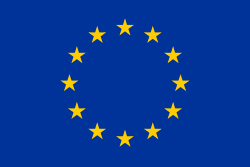 European Union (Excluding the UK) European Union (Excluding the UK) | 6,700 |
| 24 |  Malaysia Malaysia | 5,800 |
| 25 |  India India | 5,700[2][6][7] |
| 26 |  Oman Oman | 5,500 |
| 27 |  Ghana (see: Oil reserves in Ghana) Ghana (see: Oil reserves in Ghana) | 5,000 |
| 28 |  Egypt Egypt | 4,500 |
| 29 |  Vietnam Vietnam | 4,400 |
| 30 |  Australia Australia | 4,158 |
| 31 |  Indonesia Indonesia | 3,590 |
| 32 | 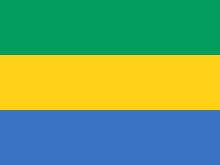 Gabon Gabon | 3,700 |
| 33 |  Yemen Yemen | 3,000[8][9] |
| 34 |  Sudan Sudan | 2,800 |
| 35 |  Syria Syria | 2,500 |
| 36 |  Mongolia Mongolia | 2,493 |
| 37 |  Colombia Colombia | 2,377 |
| 38 |  Congo, Republic of the Congo, Republic of the | 1,940 |
| 39 | 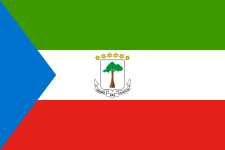 Equatorial Guinea Equatorial Guinea | 1,705 |
| 40 |  Chad Chad | 1,500 |
| 41 |  Peru Peru | 1,240 |
| 43 |  Brunei Brunei | 1,200 |
| 44 |  Uganda Uganda | 1,000 |
| 45 |  Denmark Denmark | 900 |
| 46 |  Trinidad and Tobago Trinidad and Tobago | 830 |
| 47 |  Romania Romania | 650 |
| 47 |  Turkmenistan Turkmenistan | 600 |
| 48 |  Uzbekistan Uzbekistan | 594 |
| 49 |  East Timor East Timor | 554 |
| 50 |  Argentina Argentina | 465 |
| 51 |  Thailand Thailand | 442 |
| 52 | 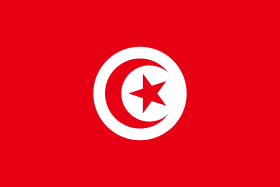 Tunisia Tunisia | 425 |
| 53 |  Italy Italy | 560 |
| 54 |  Ukraine Ukraine | 395 |
| 55 |  Pakistan Pakistan | 313 |
| 56 |  Netherlands Netherlands | 310 |
| 57 |  Germany Germany | 276 |
| 58 |  Turkey Turkey | 262 |
| 59 |  Cameroon Cameroon | 200 |
| 60 |  Albania Albania | 199 |
| 61 |  Belarus Belarus | 198 |
| 62 |  Congo, Democratic Republic of the Congo, Democratic Republic of the | 180 |
| 63 |  Cuba (see: Oil reserves in Cuba) Cuba (see: Oil reserves in Cuba) | 124[2] |
| 64 | 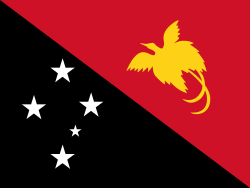 Papua New Guinea Papua New Guinea | 170 |
| 65 |  Philippines Philippines | 168 |
| 66 |  New Zealand New Zealand | 166 |
| 66 |  Chile Chile | 150 |
| 68 |  Spain Spain | 150 |
| 69 |  Bahrain Bahrain | 125 |
| 70 |  France France | 101 |
| 71 |  Ivory Coast Ivory Coast | 100 |
| 72 |  Mauritania Mauritania | 100 |
| 73 |  Poland Poland | 96 |
| 74 |  Austria Austria | 89 |
| 75 |  Guatemala Guatemala | 83 |
| 76 |  Afghanistan Afghanistan | 80[10] |
| 77 |  Suriname Suriname | 79 |
| 78 |  Serbia Serbia | 77 |
| 79 |  Croatia Croatia | 66 |
| 80 |  Burma Burma | 50 |
| 81 |  Japan Japan | 44 |
| 82 | 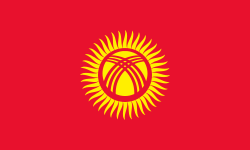 Kyrgyzstan Kyrgyzstan | 40 |
| 83 |  Georgia Georgia | 35 |
| 84 |  Hungary Hungary | 26 |
| 85 |  Bangladesh Bangladesh | 28 |
| 86 |  Bulgaria Bulgaria | 15 |
| 87 |  South Africa South Africa | 15 |
| 88 |  Czech Republic Czech Republic | 15 |
| 89 |  Lithuania Lithuania | 12 |
| 90 |  Tajikistan Tajikistan | 12 |
| 91 |  Greece Greece | 10 |
| 92 |  Slovakia Slovakia | 9 |
| 93 | 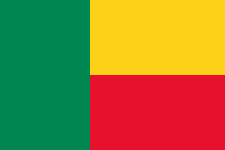 Benin Benin | 8 |
| 94 | 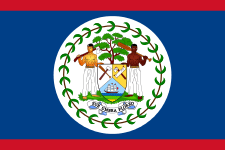 Belize Belize | 7 |
| 95 |  Taiwan Taiwan | 2 |
| 96 |  Israel Israel | 2 |
| 97 |  Barbados Barbados | 2 |
| 98 |  Jordan Jordan | 1 |
| 99 |  Morocco Morocco | 0.7 |
| 100 |  Ethiopia Ethiopia | 0.4 |
| - | Total World (2011)[11] | 1,481,526 |
See also
References
- ↑ "Climate". Greenpeace Australia Pacific. Retrieved 19 January 2015.
- ↑ 2.0 2.1 2.2 2.3 2.4 2.5 US Energy Information Administration, International energy statistics, (proved reserves as of 2014).
- ↑ Natural Resources Canada, Proven oil reserves, 9 Apr. 2014.
- ↑ 4.0 4.1 "OPEC Share of World Crude Oil Reserves". opec.org. Retrieved 19 January 2015.
- ↑ US Energy Information Administration, International energy statistics, (proved reserves as of 2013).
- ↑ OPEC Statistical Bulletin, Proven oil reserves (as of 31 Dec. 2013), accessed 29 Nov. 2014.
- ↑ BP, Statistical Review of World Energy - 2014, June 2014.
- ↑ "Oil and gas in Yemen". NOREF peacebuilding. Retrieved 25 December 2013.
- ↑ "Energy and Minerals in Yemen". US Energy information Administration. Retrieved 24 December 2013.
- ↑ "Minerals in Afghanistan". USGS Minerals gov. Retrieved 24 December 2013.
- ↑ "OPEC: World proven crude oil reserves by country, 1960-2011". Opec.org. Retrieved 2013-09-21.

